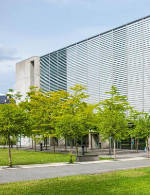
Biophysics in Dresden
BIOTEC (TU Dresden)

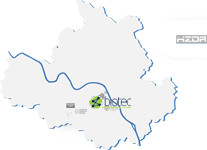
The Biotechnology Center (BIOTEC) at the TU Dresden is an interdisciplinary center focusing on research and teaching in molecular bio-sciences. The BIOTEC hosts top international research groups working on genomics, proteomics, biophysics, cellular machines, molecular genetics, tissue engineering, and bioinformatics.
The BIOTEC has about 230 members from over 35 countries, including Eastern and Western Europe, Asia, Australia, and the Americas. These researchers have diverse backgrounds, covering biology, medicine, physics, chemistry, computer science, and engineering. The BIOTEC offers excellent lab facilities and infrastructure, as well as close links to companies residing in the same building.
The BIOTEC established two international Masters Courses in Molecular Bioengineering and Nanobiophysics. Moreover, BIOTEC faculty teaches in numerous other courses at TU Dresden as well as within the Dresden International Graduate School for Biomedicine and Bioengineering.
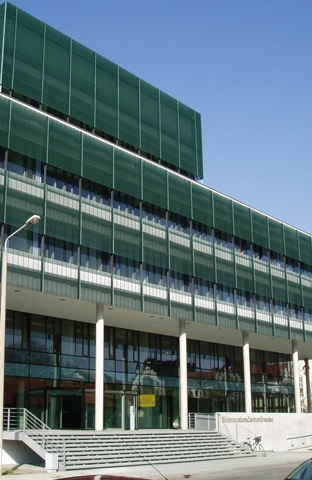
B CUBE (TU Dresden)

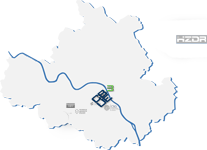
Research at B CUBE - Center for Molecular Bioengineering at the TU Dresden - focuses on the investigation of living structures on a molecular level and translating the ensuing knowledge into innovative methods, materials and technologies. To this end, the following three complementary research dimensions are combined under one roof, giving rise to the center's name:
BioProspecting: Identification and systematic cataloging of natural phenomena which answer unmet technological needs. BioNanoTools: Development and application of methods to characterize biological structures and systems at the molecular level. In addition, the investigated biomolecular machines themselves are envisioned to be optimized towards their application as novel nanotools in synthetic environments. Biomimetic Materials: Design and synthesis of novel technical material systems based on fundamental building blocks that supersede those found in nature and that exhibit properties that exceed those of conventional technologies.
B CUBE was founded in 2008 as a Center for Innovation financed by the German Federal Ministry of Education and Research. The center operates - in close collaboration with the BIOTEC - as scientifically independent unit of TU Dresden.
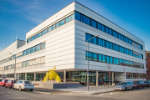
Cluster of Excellence PoL – Physics of Life (TU Dresden)

The Cluster of Excellence Physics of Life (PoL) at TU Dresden focuses on the laws of physics that underlie the organisation of life into molecules, cells and tissues. At the cluster, physicists, biologists and computer scientists join forces to investigate how active matter organises itself into predetermined structures in cells and tissues, thus giving rise to life. PoL is funded by the DFG as part of the Excellence Strategy. It is a collaboration between scientists from TU Dresden and research institutions of the DRESDEN-concept network, such as the Max Planck Institute for Molecular Cell Biology and Genetics (MPI-CBG), the Max Planck Institute for the Physics of Complex Systems (MPI-PKS), the Leibniz Institute of Polymer Research (IPF) and the Helmholtz-Zentrum Dresden-Rossendorf (HZDR).

Faculty of Biology (TU Dresden)

The Faculty of Biology with its four institutes and thirteen professors covers a large spectrum of biology from the molecular to the cellular and organismal level in research and teaching. The wide-ranging research portfolio is used as an excellent platform for numerous collaborations within the TU Dresden and outside. Fundamental research on microorganisms, plants and animals is combined with more application-oriented projects. The Faculty of Biology offers the two Bachelor courses “Molecular Biotechnology” and “Biology” and the Master course “Biology” with a total of approximately 400 students. The Faculty of Biology is housed in a new building with state of the art equipment to support excellence in research and teaching.
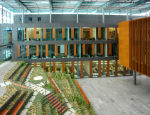
Faculty of Physics (TU Dresden)

Physics has enjoyed about 175 years of university tradition in Dresden. Its research benefits from broad international cooperations and a unique multitude of local external partners in the network of DRESDEN-concept. Its teaching atmosphere is shaped by a close alliance of teachers and learners.

Faculty of Computer Science (TU Dresden)

Today, Software Technology, Internet of Things, Cloud Computing and Security, Data-intense Computing and Big Data, Knowledge Extraction, Human-Computer-Interaction and Visual Computing, Formal Modeling and Analysis, as well as Machine Learning and Simulation are the main research topics of the Faculty. More than 200 current research topics, internationally highly regarded publications, and third-party funding of 11,52 million Euros (2013) give evidence of the Faculty’s outstanding research.
The Faculty’s six institutes with 26 professors and around 300 members of scientific and administrative staff, cover the whole spectrum of computer science, from theory to practice, from fundamental research to its application in various domains. The latest technology, teaching and learning oriented towards research and practice, internationally active professors and attractive research topics as well as international cooperation with universities and industry provide an excellent infrastructure. 250 computer workstations with comprehensive features were set up in the Faculty’s new building. Special laboratories that are equipped with 3D-visualization technology, with tracking, interaction or robotics technology, as well as audio and video cutting equipment, provide facilities for the realization of ambitious projects.

MPI-CBG
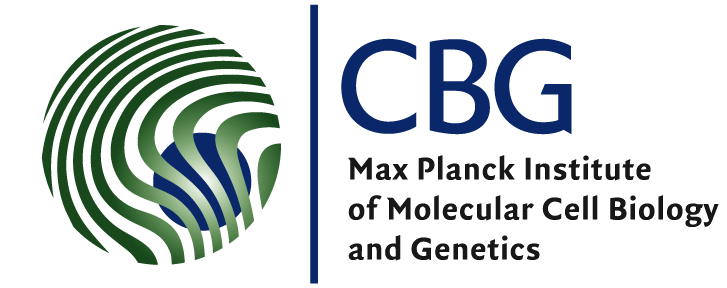
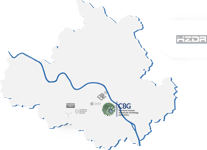
For the Max Planck Institute of Molecular Cell Biology and Genetics (MPI-CBG), the question "How do cells form tissues?" has been and still is the question that researchers are tackling from different angles. Molecular cell biologists provide insight into basic processes of cellular life and organisation. Developmental biologists and geneticists place these functions into the context of tissue development in different model organisms like zebrafish, Drosophila, C. elegans, or mouse.
The MPI-CBG has invested extensively in Services and Facilities to allow research scientists shared access to sophisticated and expensive technologies.
MPI-CBG was founded in 1998, as one of 80 institutes of theMax Planck Society, an independent, non-profit organisation in Germany.
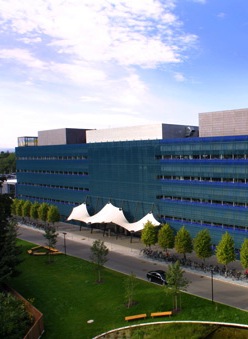
MPI-PKS
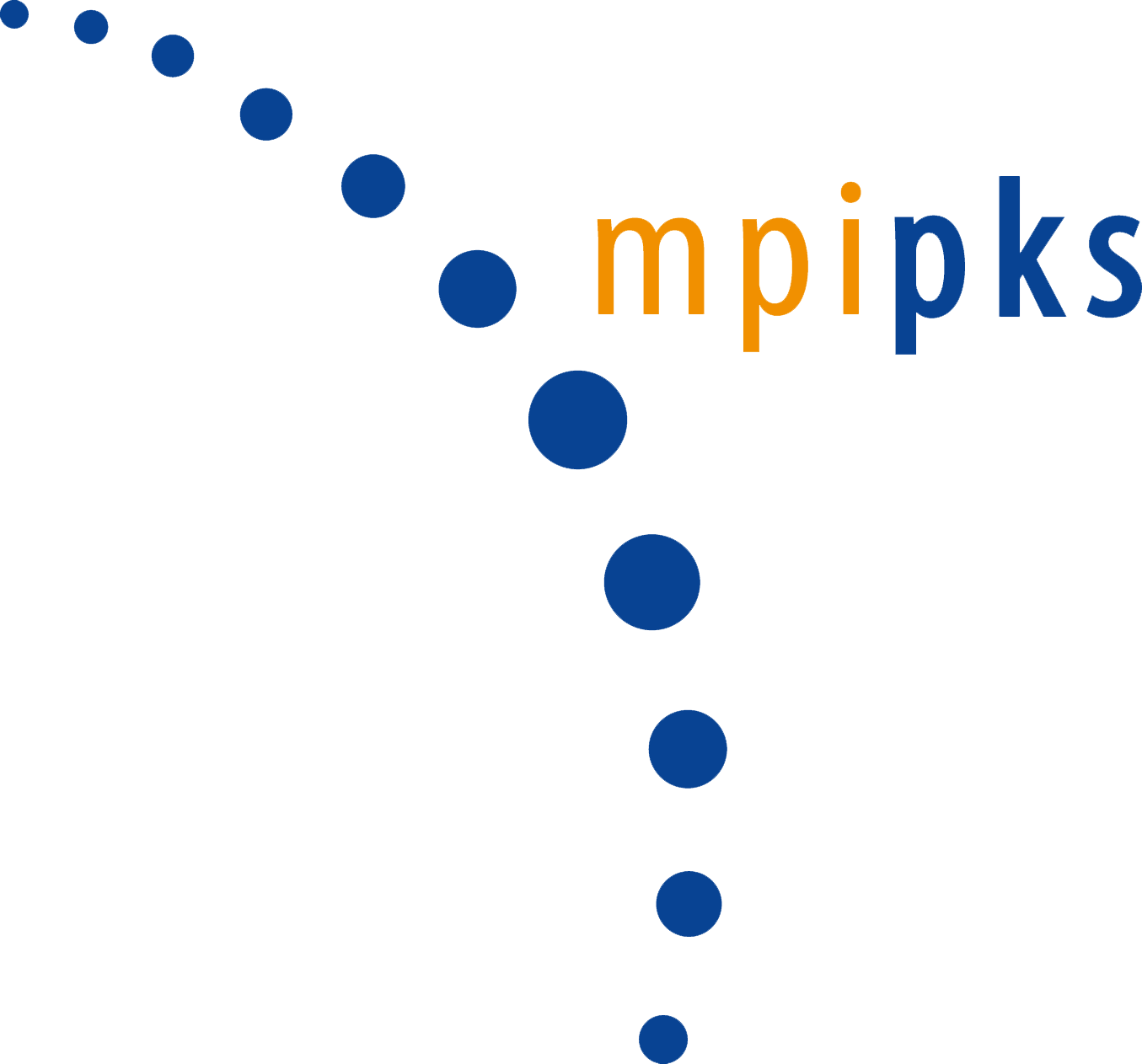
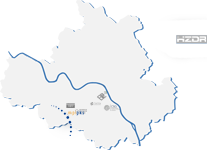
The research at the Max Planck Institute for the Physics of Complex Systems (MPI-PKS) institute ranges from classical to quantum physics and focuses on three main areas, which correspond to the activities in the three divisions. The division Condensed Matter studies the quantum physics of the solid state. The nonlinear dynamics of atoms, molecules and clusters is studied with the help of semiclassical methods in the division Finite Systems. Tools of classical statistical physics are applied to biological systems in the division Biological Physics.
In collaboration with the MPI-CBG a center for systems biology was established (http://www.mpg-sysbio.de), which includes three joint research groups between the two institutes.
The MPI-PKS hosts a large visitors progam and an extensive workshop and seminar program. The aim is to boost new promising research directions and to provide faster contact of young scientists with the rapidly evolving spectrum of new research topics in the broad field of the physics of complex systems.
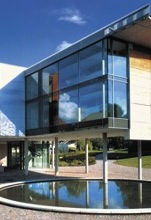
HZDR – Helmholtz-Zentrum Dresden Rossendorf

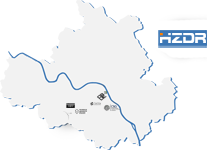
The Helmholtz-Zentrum Dresden-Rossendorf (HZDR) pursues new insights that will allow to maintain and improve all of our lives. That is why the HZDR conducts research in the sectors health, energy, and matter in Dresden and at three other locations. Three of the five large-scale facilities are also available to external guests from around the world to help answer the decisive questions of our society.
Establishing networks, focusing on the future, and thinking outside the box are all paramount to the HZDR. That’s why the HZDR supports qualified young scientists and coordinates the Helmholtz Allicance LIMTECH, a Helmholtz Energy Alliance, two Helmholtz Virtual Institutes and a German-Russian research group. The HZDR is also actively involved in the Helmholtz Association’s portfolio and roadmap process.
HZDR is a member of the Helmholtz Association of German Research Centres.
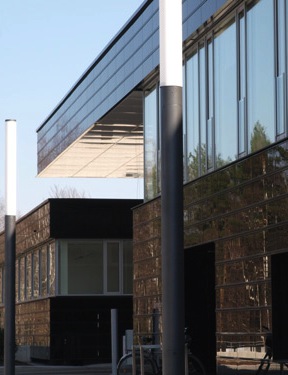
IFW - Leibniz-Institut für Festkörper- und Werkstoffforschung Dresden

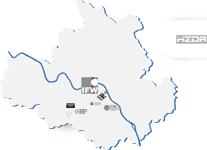
The IFW’s research program is jointly set up and implemented by all scientists of the different IFW institutes. It comprises the following five research areas: Superconductivity & superconductors, Magnetism and magnetic materials, Molecular Nanostructures and Molecular Solids, Metastable alloys, and Stress-driven architectures and phenomena. In all these research areas we follow continuous lines from explorative work in natural science through application-relevant problems up to the development of technological processes and new products. All five Institutes of the IFW are involved in each of these research areas.
The research program of the IFW deals with materials, which exhibit particular physical behaviour, like magnetism or superconductivity, or which are newly discovered substances promising interesting properties, like metallic glasses or carbon nanotubes. At the beginning the discovery of new physical effects or chemical compounds give rise to euphoric perspectives concerning their application. But there are many difficulties to be overcome before new achievements in natural sciences can really result in new products. The IFW Dresden meets this challenge and faces up to this whole process.
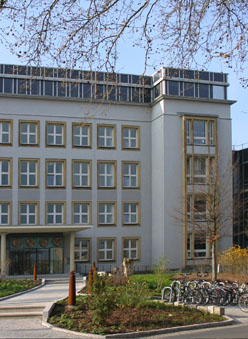
IPF - Leibniz Institute of Polymer Research Dresden

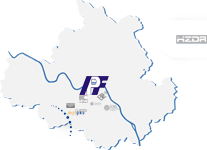
The Leibniz Institute of Polymer Research Dresden (IPF) is one of the largest polymer research facilities in Germany. As an institute of the Leibniz Association, the IPF is committed to carrying out application-oriented fundamental research.
The research focus is on materials problems and needs which can be approached by control of interface-related properties as well as interactions at interfaces and surfaces. A deep understanding of techniques and processes as well as of underlying physical aspects shall provide the basis to develop long-term concepts for technological implementation and applications of new polymer materials. Thereby, the institute's profile is determined by four strategic topics: (i) Functional nanostructured interfaces and polymer systems, (ii) Biology-inspired interface and material design, (iii) Polymer networks: Structure, theory, and application, and (iv) Process-controlled structure formation in polymer materials.
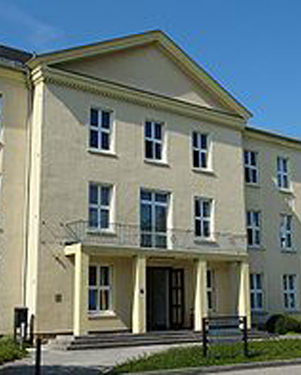
cfaed (TU Dresden) – Center for Advancing Electronics Dresden

cfaed – Center for Advancing Electronics Dresden
Semiconductors form the basis for Information and Communication Technology – the major driving force for innovation of our times. It has significantly shaped the world we live in today and has paved the way to the information age. It has not only transformed industrial development and science (as foreseen by their creators), but also the society by entering our daily lives through applications in health, government, communication, entertainment, mobility, etc.
Exciting facets of these developments are: The Human Genome Project; Fair access to information, world-wide; Mobile communication, bringing broad-band connectivity to remote areas and helping developing countries to leap-frog in their development; Grass-root revolutions that are enabled by new communication platforms, using social media and smart phones. Currently, information processing is based on CMOS technology that has provided exponential improvements, governed by Moore’s Law, for decades. However, as we are approaching physical boundaries, the CMOS roadmap will saturate. Inspired by the huge impact of semiconductor technology, the researchers of our cluster have thus joined forces to explore new technologies for electronic information processing which overcome the limits of today's predominant CMOS technology.
